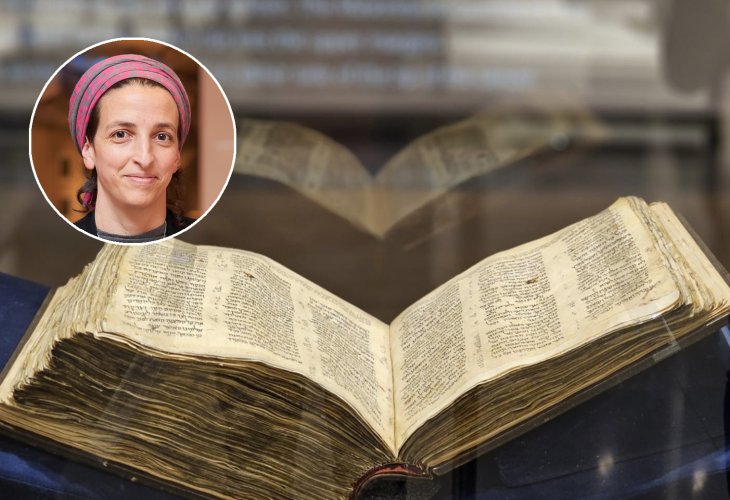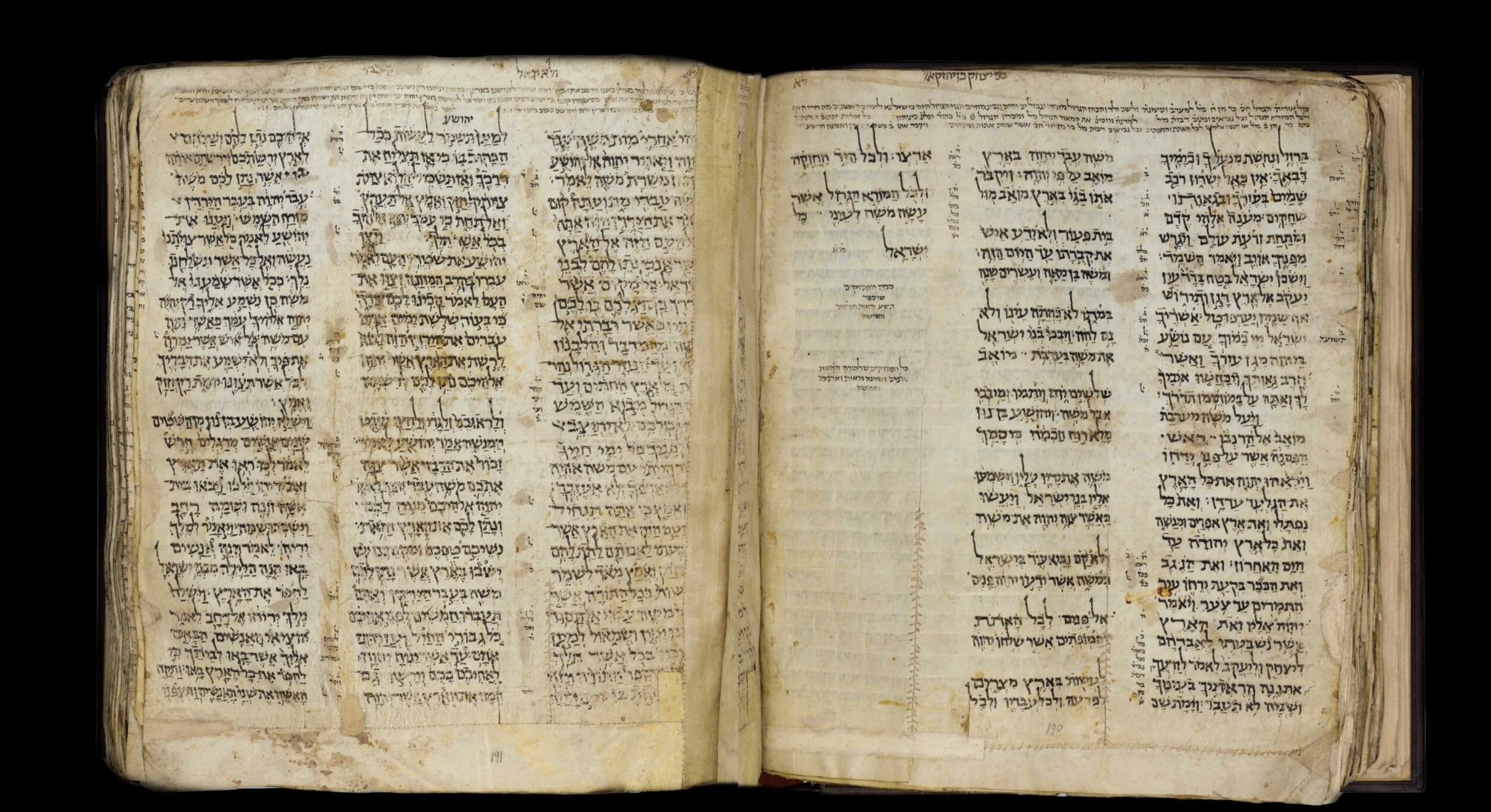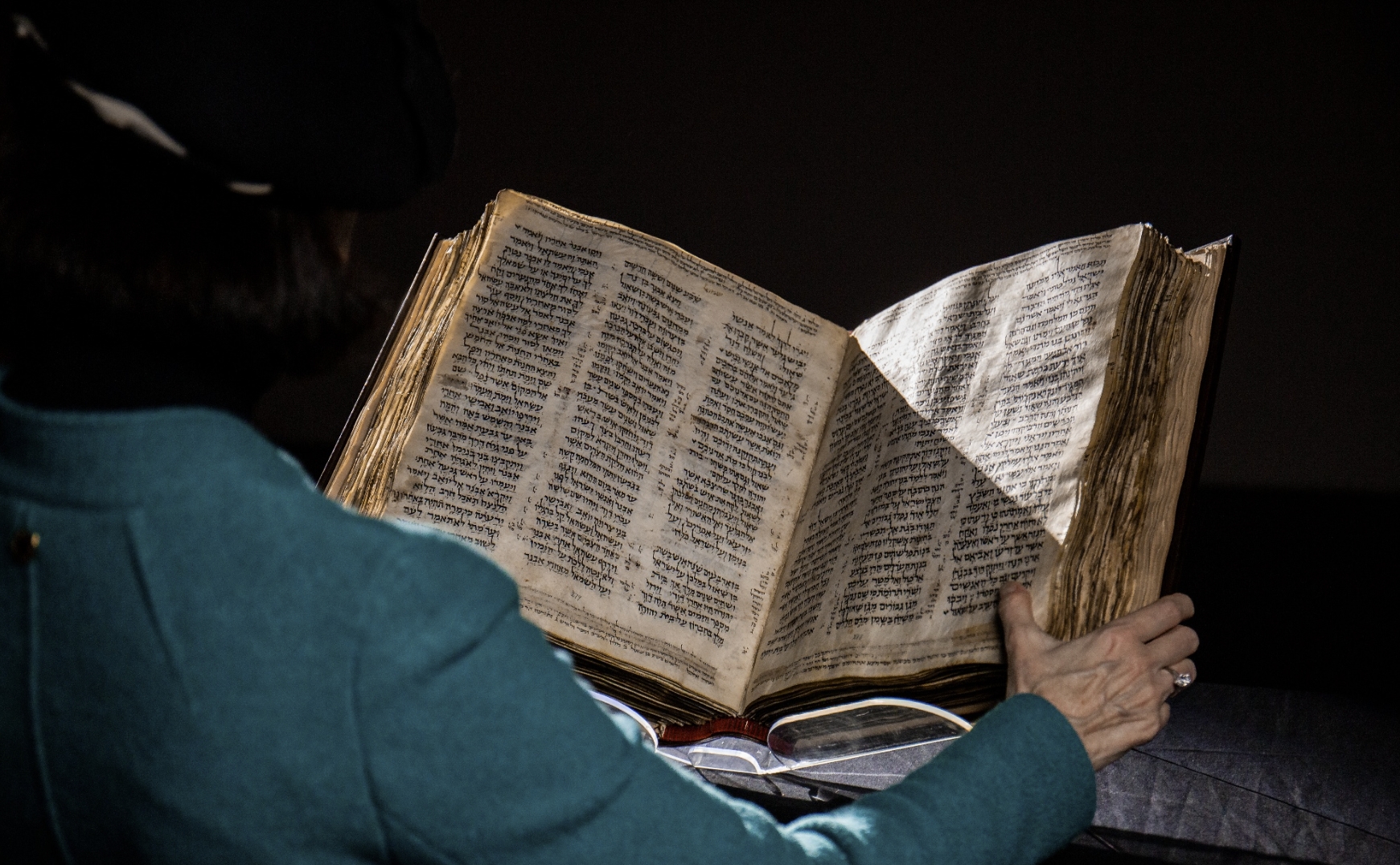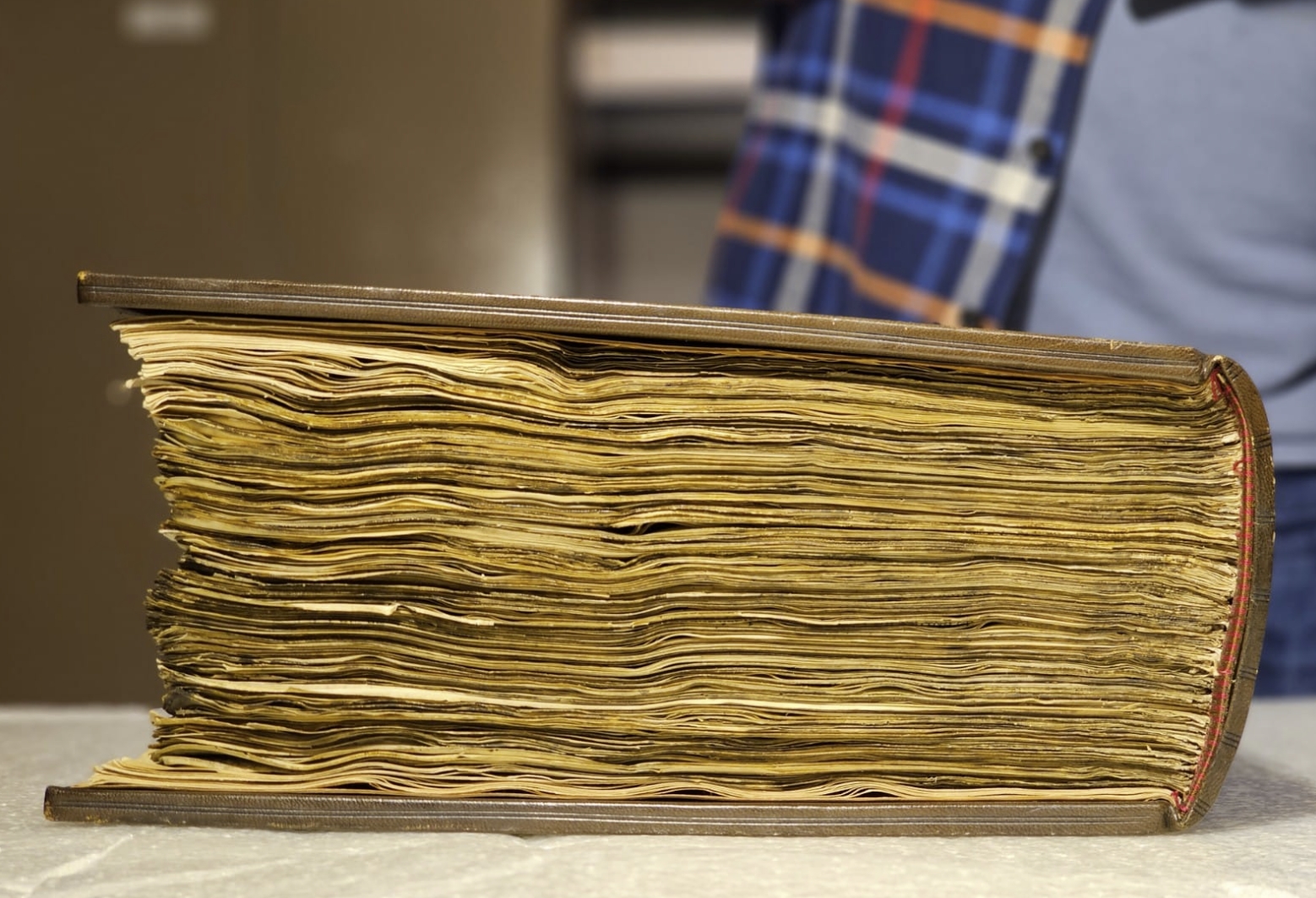Curator Documents $30-50 Million Bible: 'Excitement to Touch the Oldest Bible in the World'
For over a thousand years, the Sassoon Codex has been a cornerstone of human history. As it goes on public display for the first time this week, we speak with the curator at the 'ANU' Museum, who has touched and researched it, giving us an unprecedented opportunity to witness it too.
 'ANU' Museum, Photo: Nir Antman (Inset: Curator at 'ANU': Irit Shapira-Meir)
'ANU' Museum, Photo: Nir Antman (Inset: Curator at 'ANU': Irit Shapira-Meir)Have you ever had the chance to witness an ancient holy book written over 1000 years ago up close? Your answer is certainly negative, since the only book that exists from those years is the 'Sassoon Codex'—the name for the world's oldest Bible, which has never before been publicly displayed.
In about a month, the book will be auctioned in New York through Sotheby's, which has already noted that it is the most expensive book, manuscript, and historical document ever offered at auction, valued at $30-50 million. These days, just before the book is sold and passes into new ownership, 'ANU – Museum of the Jewish People' has received the opportunity to publicly showcase it in a one-time event.
So what is this 'Codex'? How was it preserved, who owned it, and what is its story? We set out to discuss this with Irit Shapira-Meir, curator at 'ANU', who at the beginning of our conversation prepares us that regarding the 'Codex', much is hidden from the eye, yet she shares the known details about it.
 The last page of Deuteronomy (Photo: Ardon Bar Hama)
The last page of Deuteronomy (Photo: Ardon Bar Hama)Torah, Mystery, and History
"We are probably talking about 'the most complete ancient Bible in existence,'" opens Irit, "which means there is no other older Bible in the world. A 'Codex' is a term for a book copied and bound in the manner known to us today, page by page on both sides, whereas previously the Bible was copied onto scrolls."
Is the precise date when the book was written known?
"The date does not appear in the book, but thorough scientific tests including carbon dating have determined that it likely originated at the beginning of the 10th century CE, probably written in the region of Israel and Syria. It is almost a contemporary of the Aleppo Codex, and it appears they were written around the same time. Unlike the Aleppo Codex, which reached us after hands had already altered it, preventing its original state from being preserved, the uniqueness of the ancient Bible book is that it contains almost all 24 books of the Bible and about 92% of the biblical text. The only lost pages are the first ten pages of Genesis, and additionally, there is natural wear in certain areas, but since it was copied on very high-quality parchment, it has remarkably survived to this day. Or as the researchers who examined it said, 'It has a life of its own.'"
Is the book written in Hebrew letters, as we know them?
"Certainly, it is written in regular Hebrew, but it is unique in that the text generally appears in three columns, different from ancient Torah scrolls or scrolls discovered in the past, like the Dead Sea Scrolls. The text also has vowel points and cantillation marks, indicating that it was not intended for synagogue reading but for scholarly study. However, the most special thing is that in addition to the cantillation marks and vowel points, there are also 'Masoretic notes' in the Bible, written by those who held it to preserve the accepted biblical text and prevent copying errors. These notes were handwritten on the Bible pages, between the columns, and in the upper and lower margins of the page."
Were the notes also written in Hebrew?
"Yes, they are written in Hebrew, but in sacred language, as scholars tend to write. For those not familiar with the script of those times, it would be somewhat difficult to decipher them, as the shape of the letters is slightly different from what we know today, but experts in the field immediately recognize the handwriting and can also decipher the words."
Preservation for Generations
For those wondering how the Bible survived the years, Irit notes that since it is a large and heavy Bible, it primarily served communities rather than individuals, leading it to be highly regarded and preserved well.
"We managed to identify on the book two inscriptions indicating different ownership it had," she details, "one of which states that the book was sold to 'Isaac ben Ezekiel.' The scribe documenting this sale blesses 'ben Ezekiel' to be enlightened by 'Elokim' in His Torah and to see his sons studying Torah. At the top of the page containing this inscription, Isaac ben Ezekiel himself writes that he transfers ownership to his sons Ezekiel and Maimon, and he also writes there, 'this book is holy to Hashem' and places responsibility on his sons: 'It will neither be sold nor redeemed, and cursed be the one who sells it.' This inscription lacks a date, and no location is mentioned.
 'Sassoon Codex', the earliest complete Hebrew Bible, courtesy of Sotheby's
'Sassoon Codex', the earliest complete Hebrew Bible, courtesy of Sotheby's"In another part of the book, a dedication to the 'Machsyn' synagogue is preserved, identified with a town in northeastern Syria. In that same page, it reads, 'Holy to Hashem, God of Israel', and it continues to describe how the book will remain under guardian ownership until the Machsyn synagogue is rebuilt, and if not, then the sons of the person holding the book will inherit it under that same condition. Again, no date appears here, but experts estimate that the inscriptions were written during the 13th century.
"The next time we hear about this Bible book is during the 20th century, when a collector of Jewish manuscripts named David Solomon Sassoon bought the book through someone who mediated for him from Ankara, Turkey. He rebound it and allowed researchers to see the book. He also deposited a photograph of the manuscript in the national library. By the way, the name of the collector Sassoon is also the source of the nickname 'Sassoon Codex' attached to the ancient Bible to this day. After Sassoon passed away, his heirs received the book, and it continued to change hands until today it is owned by Jacqui Safra, who is offering it for auction."
History at the Museum
After so many transitions the ancient Bible book has undergone, many questions about it remain unanswered. It's unclear who wrote it and for what purpose, and especially what happened to it for nearly 700 years, from when the ancient inscriptions were written until it was found in Ankara. These questions occupy many researchers worldwide and seem unlikely to ever be answered.
 (Photo: Nir Antman)
(Photo: Nir Antman)"For now, we have the privilege of showcasing it at the 'ANU' Museum until it officially goes up for auction," clarifies Irit, "and we are allowing people to come and see the oldest Bible in the world up close for the upcoming week. However, I must mention that a quality copy of the book can also be seen on the national library's website, but of course, a photograph does not compare to seeing with one's own eyes the rarest and oldest Bible book in existence."

